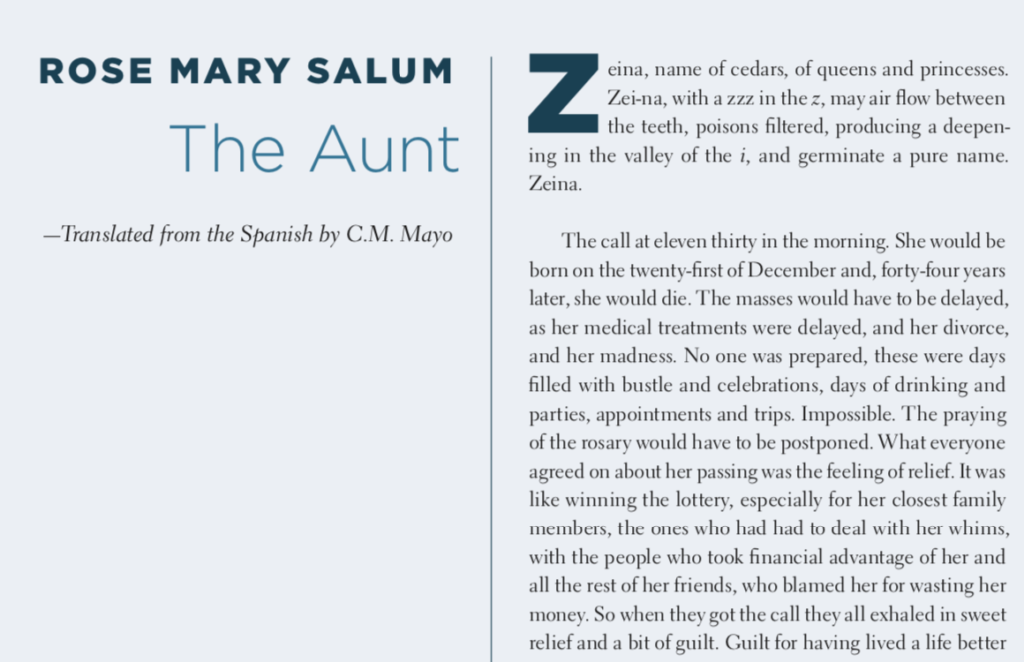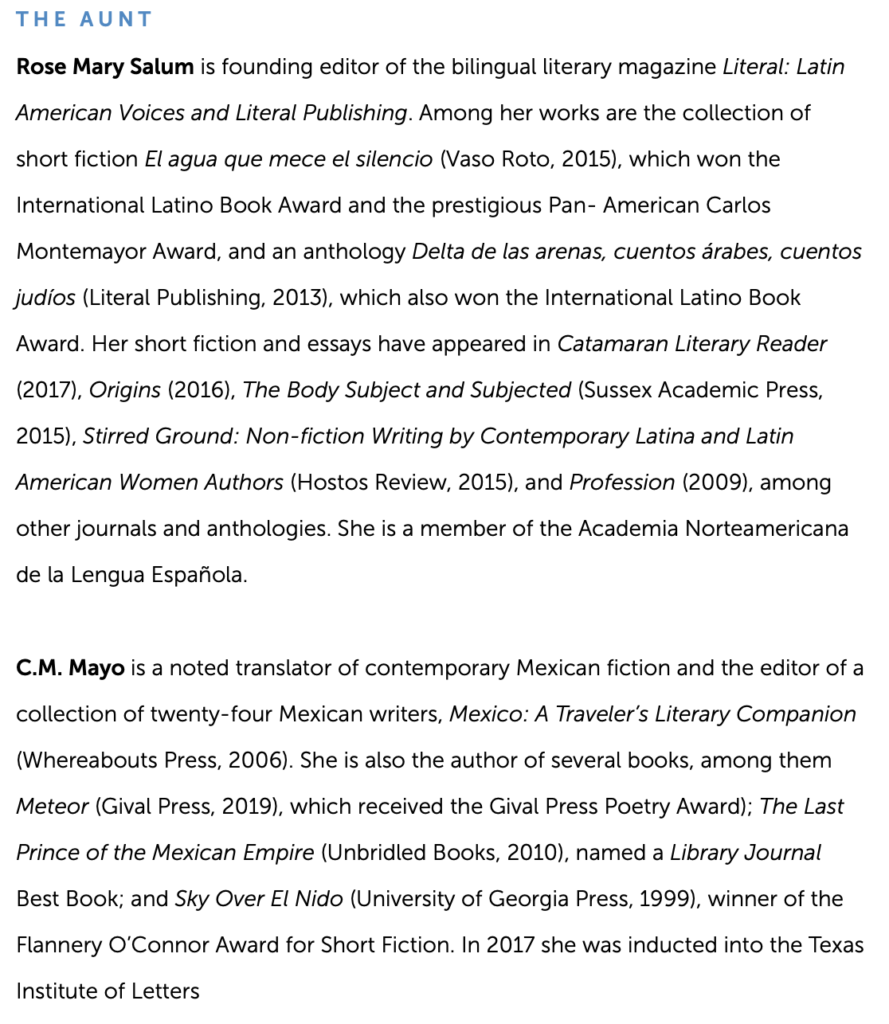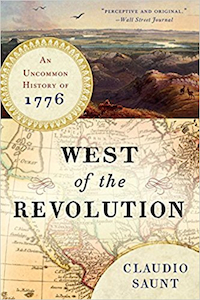BY C.M. MAYO — June 6, 2022
UPDATE: This blog was then entitled Madam Mayo (2006-2022).
This blog posts on Mondays. In 2022 first Mondays of the month are for Texas Books, posts in which I share with you some of the more unusual and interesting books in the Texas Bibliothek, that is, my working library.
> For the archive of all Texas-related posts click here.
P.S. Listen in any time to the related Marfa Mondays Podcasting Project.
The end of March 2022 marks the 16th anniversary of this blog, after which point, until further notice, I will be posting approximately two Mondays a month. The posts on Texas Books, the writing workshop, my own work, and a Q & A with another writer, will continue, each posting every other month and, as ever, when there is a fifth Monday in a given month, a newsletter.
OUR LOST BORDER
Edited by Sarah Cortez and Sergio Troncoso
Arte Público Press, Houston, Texas
Trade paperback $19.95, March 30, 2013
ISBN: 978-1-55885-752-0
Review by C.M. Mayo originally published in Literal, 2013
Lurid television, newspaper stories, and cliché-ridden movies about Mexico abound in English; rare is any writing that plumbs to meaningful depths or attempts to explore its complexities. And so, out of a concatenation of ignorance, presumption and prejudice, those North Americans who read only English have been deprived of the stories that would help them see the Spanish-speaking peoples and cultures right next door, and even within the United States itself, and the tragedies daily unfolding because of or, at the very least kindled by, the voracious North American appetite for drugs. For this reason, Our Lost Border: Essays on Life Amid the Narco-Violence, a treasure trove of one dozen personal essays, deserves to be celebrated, read, and discussed in every community in North America.
Not a book about Mexico or narcotrafficking per se, Our Lost Border is meant, in the words of its editors, Chicano writers Sarah Cortez and Sergio Troncoso, “to bear witness,” to share what it has been like to live and travel in this region of Mexico’s many regions, and what has been lost.
Snaking from the Pacific to the Gulf of Mexico, the 2,000 mile-long U.S,-Mexico border is more than a fence or river or line on a map of arid wastelands; it is the home of a third culture or, rather, conglomeration of unique and hybrid cultures that are, in the words of the editors, “a living experience, at once both vital and energizing, sometimes full of thorny contradictions, sometimes replete with grace-filled opportunities.”
In “A World Between Two Worlds,” Troncoso asks, “what if in your lifetime you witness a culture and a way of life that has been lost?” And with finesse of the accomplished novelist that he is, Troncoso shows us how it was in his childhood, crossing easily from El Paso to Ciudad Juárez: family suppers at Ciros Taquería near the cathedral; visits to his godmother, Doña Romita, who had a stall in the mercado and who gave him an onyx chess set; getting his hair cut by “Nati” at Los Hermanos Mesa… Then, suddenly, came the carjackings, kidnappings, shootings, extorsions. For Troncoso, as for so many others fronterizos, the loss can be measured not only in numbers— homicides, restaurants closed, houses abandoned— but also in the painful pinching off of opportunities to segue from one culture and language with such ease, as when he was a child, for that had opened up his sense of possibility, creativity, and clear-sightedness, allowed him develop a practical fluidity, what he calls a “border mentality”— not to judge people, not to accept the presumptions of the hinterlands, whether of the U.S. or Mexico, but “to find out for yourself what would work and what would not.”
For many years along the border, and in some parts of the interior, drug violence was a long-festering problem. It began to veer out of control in the mid-1990s; by the mid-2000s it had become acute, metastasising beyond the drug trade itself into kidnapping, extorsion and other crimes. Short on money and training— in part a result of a series of fiscal crises beginning in the early 1970s— the Mexican police had proven ineffective, easily outgunned or bribed. Shortly after he took office in late 2006, President Felipe Calderón unleashed the armed forces in an all-out war against the cartels and that was when the violence along the border erupted as the narco gangs fought pitched battles not only against the army, marines, and federal and local police, but also and especially, and in grotesquely gory incidents, each other. Some of the worst fighting concentrated in the border state of Tamaulipas in its major city, Tampico, which is a several hours’ drive south of the border with Texas, but a major port for cocaine transhipments.
In the opening essay, “The Widest of Borders,” Mexican writer Liliana V. Blum provides a Who’s Who of the narco-gangs, from the Gulf Cartel, which got its start with liquor smuggling during Prohibition, to its off-shoot, the Zetas, which formed around a nucleus of Mexican Army special forces deserters in 1999, then joined the Beltrán Leyva Brothers, blood enemies of the Sinaloa Cartel. Fine a writer as she is, Blum’s experiences, which included having to drive her car through the sticky blood of a mass murder scene on the way home from her daughter’s school, make discouraging reading.
In “Selling Tita’s House,” Texas writer Mari Cristina Cigarroa recounts her family’s visits and Christmases to her grandparents’ elegant and beloved mansion in Nuevo Laredo. But then, with soldiers in fatigues patrolling the streets, Nuevo Laredo seemed “more like an occupied city during a war.” Chillingly, she writes, “I awoke to the reality that cartels controlled Nuevo Laredo the day I could no longer visit the family’s ranch on the outskirts of the city.”
The strongest and most shocking essay is journalist Diego Osorno’s “The Battle for Ciudad Mier,” about a town shattered in the war between the Zetas and the Gulf Cartel for Tampaulipas.
I have hope for Mexico for, as as an American citizen who has lived in Mexico’s capital and traveled and written about its astonishingly varied history, literature, and varied regions for over two decades, I know its greatness, its achievements, its resilience, and creativity. But in his foreword, Rolando Hinojosa-Smith rightly chides, “The United States needs to wake up.”
I welcome your courteous comments which, should you feel so moved, you can email to me here.

Great Power in One: Miss Charles Emily Wilson
Edna Ferber’s Giant
& A Selection of Related Books,
Plus Two Related Videos On (Yes) the Nuremberg Trials
Why Translate? The Case of the President of Mexico’s Secret Book














